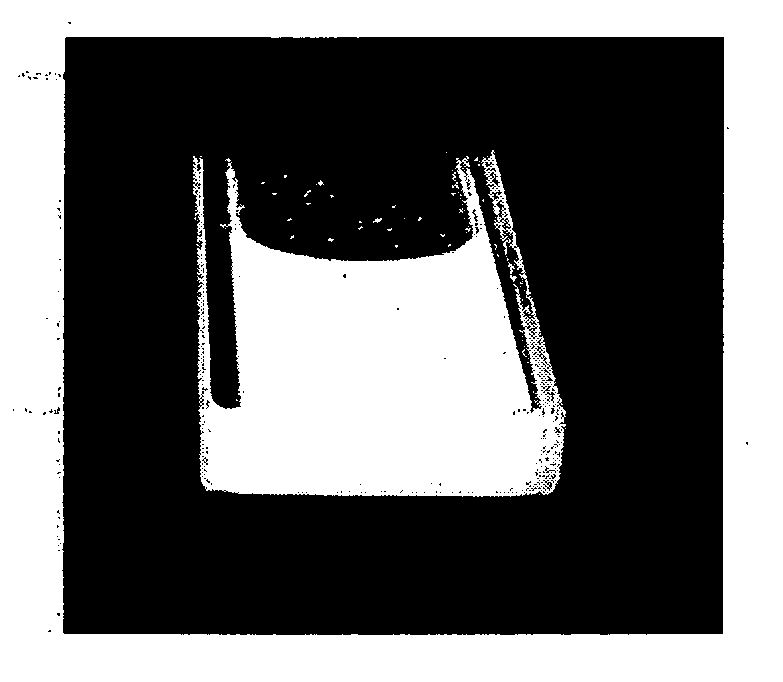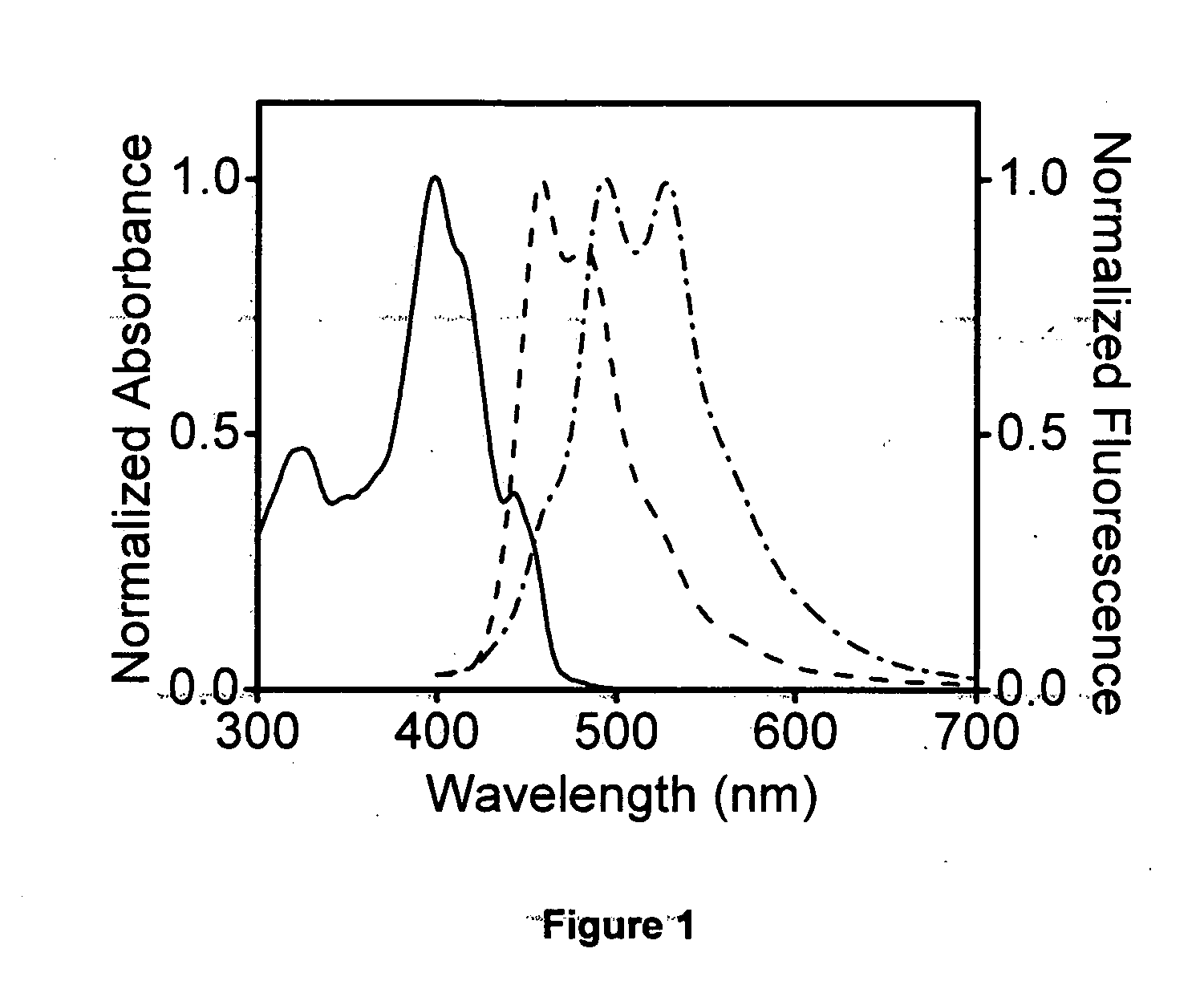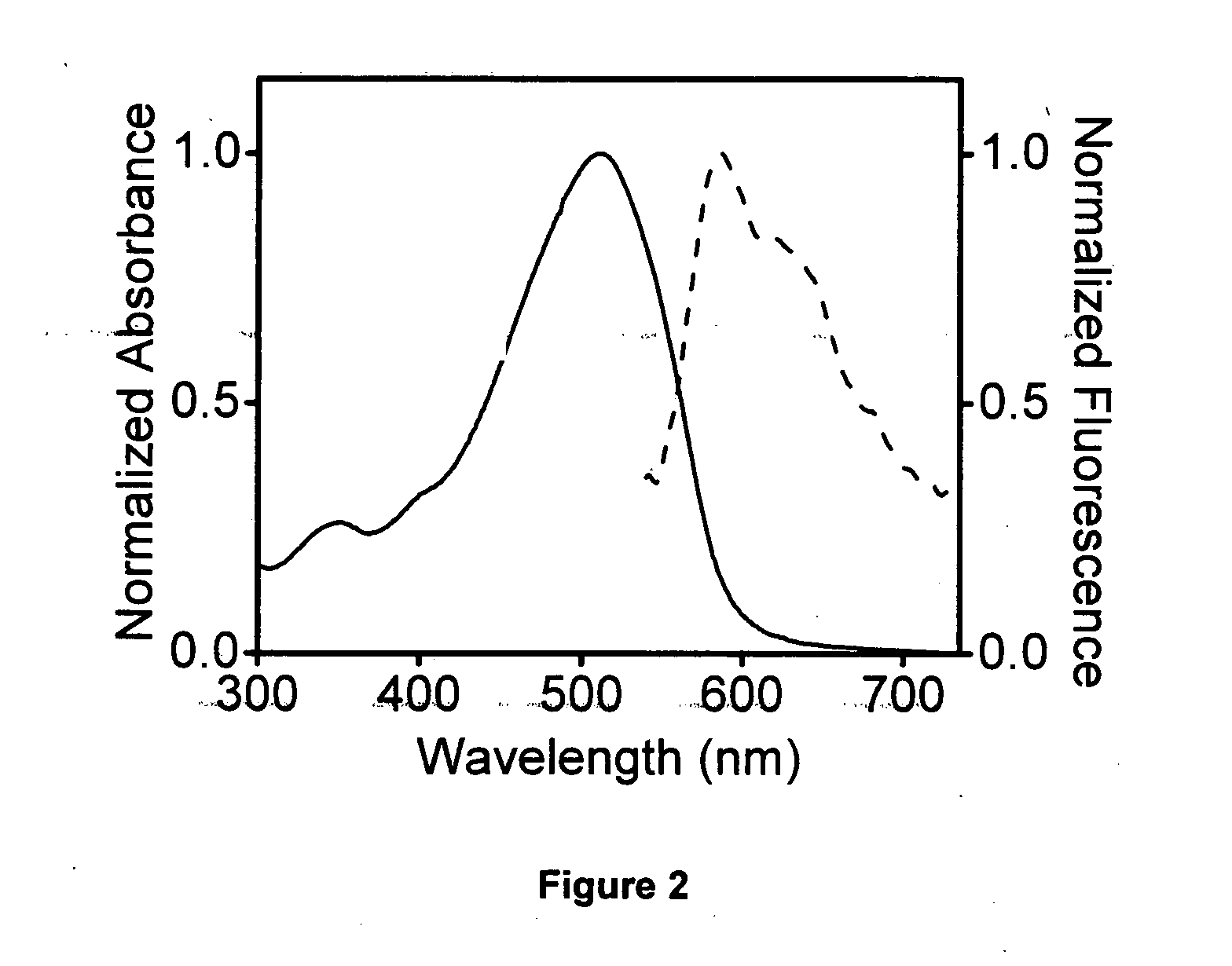White light emitting organogel and process thereof
a technology of organogel and white light, which is applied in the direction of discharge tube luminescnet screen, other chemical processes, separation processes, etc., can solve the problems of high cost and significant amount of energy required for lcd technology
- Summary
- Abstract
- Description
- Claims
- Application Information
AI Technical Summary
Problems solved by technology
Method used
Image
Examples
example 1
[0048]Synthesis of Formula 1 was achieved as per Scheme 1. It was prepared by refluxing OPV alcohol (1 equivalent) with cholesteryl chloroformate (2.2 equivalents) in benzene (dry, 20 equivalents) in the presence of pyridine (dry) as the catalyst at 80° C. for 8 h. Evaporation of the solvent results in Formula 1 with yield of 86%. The residue was then dissolved in chloroform. It was then precipitated by the addition of methanol and filtered. The crude mixture was then purified to 100% by eluting through a silica column using chloroform-hexane (1:2) mixture and characterized by IR, 1H NMR, 13C NMR, and MALDI-TOF mass spectrometry.
[0049]This fluorophore emits blue light in the monomer state on excitation with UV light. It emits green light in the aggregated or self-assembled or gel state in nonpolar solvent medium, preferably decane, dodecane, hexane, cyclohexane, methyl cyclohexane and specifically decane at room temperature, neutral pH and atmospheric pressure.
example 2
[0050]Synthesis of Formula 2 was achieved as per Scheme 2. It was prepared by refluxing a solution of bisaldehyde derivative (1 equivalent) with bisphosphonate (1 equivalent) in presence of NaH (6 equivalents) in THF (Dry, 15 equivalents). After refluxing at 80° C. for 26 h, the reaction mixture was cooled and THF was removed under reduced pressure. The resultant residue was then extracted with dichloromethane and washed several times with saturated brine and water. The organic layer dried over anhydrous Na2SO4 and the solvent was removed. The product thus obtained purified by repeated precipitation by adding methanol to a dichloromethane solution gave the Formula 2 as dark red solid.
[0051]This fluorophore emits red light in decane at room temperature, neutral pH and atmospheric pressure when suitably excited.
example 3
[0052]A coassembled gel was prepared by the encapsulation of 2.1 mol % of acceptor (Formula 2) in 97.9 mol % of the donor (Formula 1) in decane (neutral pH) and followed by heating (60° C.) and cooling (room temperature) at atmospheric pressure. On excitation of the gel with UV light (380 nm), broad emission was seen in the range of 400-700 nm (FIG. 3) which contain red, green and blue colors to give bright white light emission (FIG. 4). The white light obtained here is a combination of emissions coming from the monomer and aggregates of donor along with the acceptor emission due to the energy transfer from the donor. The chromaticity diagram at this particular composition reveals CIE co-ordinates of 0.31, 0.35 (FIG. 5) which are ideal for white light emission.
The main advantages of the present invention are:
1. A new processing method for the making of a white light emitting material with a suitable chromaticity.
2. Development of a white light emitting organogel.
3. Compared with oth...
PUM
| Property | Measurement | Unit |
|---|---|---|
| mol % | aaaaa | aaaaa |
| temperature | aaaaa | aaaaa |
| temperature | aaaaa | aaaaa |
Abstract
Description
Claims
Application Information
 Login to View More
Login to View More - R&D
- Intellectual Property
- Life Sciences
- Materials
- Tech Scout
- Unparalleled Data Quality
- Higher Quality Content
- 60% Fewer Hallucinations
Browse by: Latest US Patents, China's latest patents, Technical Efficacy Thesaurus, Application Domain, Technology Topic, Popular Technical Reports.
© 2025 PatSnap. All rights reserved.Legal|Privacy policy|Modern Slavery Act Transparency Statement|Sitemap|About US| Contact US: help@patsnap.com



